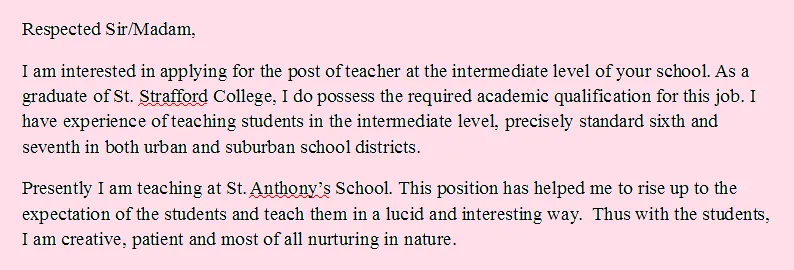Understanding the Importance of a Teacher Cover Letter
A well-crafted cover letter is your first opportunity to make a positive impression on a potential employer. It’s more than just a formality; it’s a crucial tool that complements your resume and allows you to highlight your qualifications and experience in a way that a resume alone cannot. For experienced teachers, the cover letter provides a platform to showcase years of expertise, unique skills, and a deep understanding of educational practices. It enables you to connect your past achievements to the specific needs of the school, demonstrating that you are not just a candidate, but a valuable asset. The cover letter, therefore, should be treated as a critical part of your application, as it influences the hiring manager’s perception of your suitability for the role. By investing time in crafting a persuasive cover letter, you increase your chances of securing an interview and ultimately landing your dream teaching position. This document is a strategic opportunity to stand out from other applicants and present yourself as the ideal choice.
Crafting a Compelling Header
Your header is the first thing a hiring manager sees, so it needs to be both professional and eye-catching. Begin with your full name, clearly displayed at the top. This should be followed by your contact information your phone number and a professional email address. Avoid using nicknames or unprofessional email addresses. Consider adding a link to your online portfolio or professional website if you have one. This gives the hiring manager immediate access to additional information about your experience, teaching philosophy, and accomplishments. The header should be clean, uncluttered, and easy to read. Use a font that is both professional and easily readable, such as Arial or Times New Roman. Ensure that the header is consistent in design with your resume, creating a cohesive application package. A well-designed header immediately conveys professionalism and attention to detail, setting a positive tone for the rest of your cover letter. Remember, first impressions matter, and your header plays a vital role in shaping that initial perception.
Your Contact Information
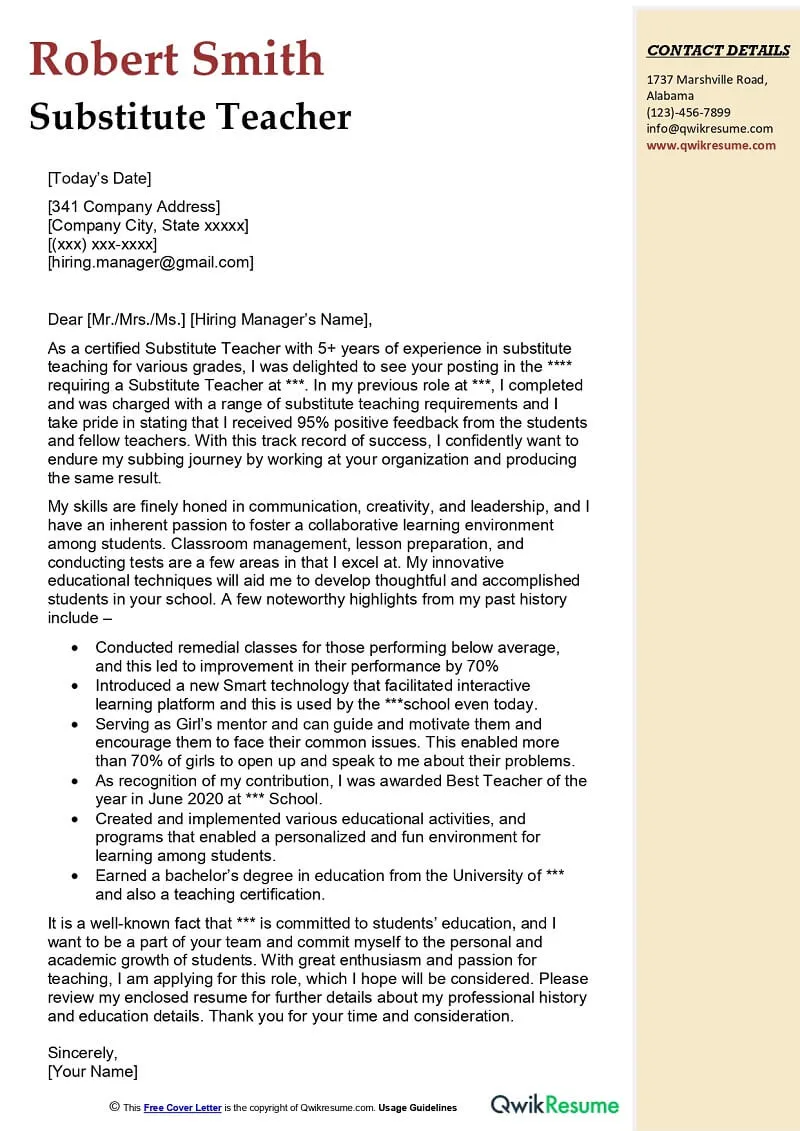
Immediately below your name, provide your complete contact information. This should include your phone number, ensuring it has a professional voicemail greeting, and your email address. It’s crucial to use an email address that sounds professional. Avoid using nicknames or informal language in your email address. Consider including a link to your professional online profile, such as LinkedIn or a personal website, if applicable. Ensure that your contact information is accurate and up-to-date. Any errors here can lead to the employer being unable to contact you, which can disqualify your application. Always double-check for typos or inaccuracies before submitting your cover letter. Ensuring that your contact information is easily accessible and error-free will help hiring managers reach you quickly, maximizing your chances of being contacted for an interview.
Date and Recipient Details
Start your cover letter with the current date. Below the date, provide the recipient’s details. If possible, address the letter to a specific person, such as the hiring manager or principal. This personalized touch shows you have taken the time to research the school and the position. If you cannot find a specific name, use a title such as “Hiring Committee” or “Principal.” Include the recipient’s title, the school’s name, and the school’s address. Make sure to format your letter according to standard business letter guidelines. Using proper formatting demonstrates professionalism and attention to detail. Correctly addressing your letter is a key step in making a favorable first impression. Proper formatting of these sections will instantly make your letter look more polished and professional, showcasing your attention to detail and respect for the hiring process.
Addressing the Hiring Manager
The salutation is where you address the hiring manager. Always use a formal salutation such as “Dear Mr./Ms./Dr. [Last Name].” If you don’t know the name, use a title like “Dear Hiring Committee” or “Dear Principal.” Avoid using overly casual salutations like “Hi” or “Hello.” In your opening paragraph, immediately state the position you are applying for. Clearly and concisely explain how you learned about the position. This helps the hiring manager quickly understand your purpose for writing. Expressing enthusiasm for the role and the school is essential. This initial paragraph sets the tone for the rest of your letter and shows that you’re genuinely interested in the opportunity. It highlights your initiative and helps create a positive first impression. Make sure the salutation aligns with the tone you set for the rest of your cover letter.
Highlighting Your Relevant Experience
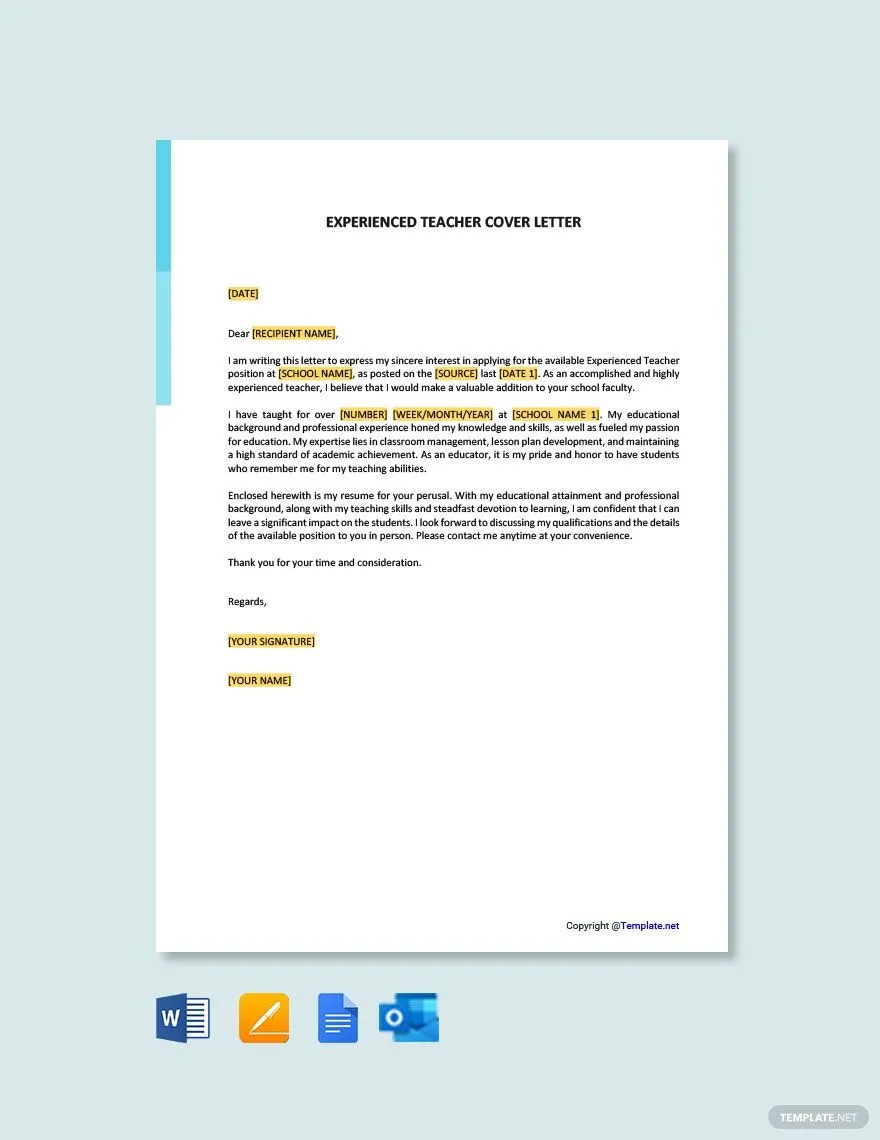
In the body of your cover letter, clearly outline your teaching experience. Focus on the most relevant experiences that match the requirements of the job description. Include details about the grades or subjects you have taught, the schools where you worked, and the duration of your employment. Use action verbs to describe your responsibilities and achievements. Provide specific examples of how you have positively impacted student learning and the school environment. Tailor your examples to align with the school’s specific needs and values. If the job description emphasizes a particular skill, such as differentiated instruction or classroom management, make sure to provide concrete examples of how you’ve successfully implemented these skills in your previous roles. This targeted approach demonstrates that you are the ideal candidate. Refer to the requirements listed in the job posting and address them directly in your cover letter.
Showcasing Your Achievements and Skills
Beyond describing your experience, highlight your key skills and achievements. Focus on accomplishments that demonstrate your effectiveness as a teacher. Mention specific skills like lesson planning, classroom management, and curriculum development. Provide examples of how you have improved student outcomes. Mention any special certifications or training you have received. Highlight awards, recognitions, or positive feedback from students, parents, or supervisors. When describing your achievements, quantify them whenever possible. Use numbers to illustrate your impact, such as the percentage increase in test scores or the number of students who achieved a specific goal. Make sure the achievements you highlight match the school’s priorities and expectations. Tailor your skills and accomplishments to directly address the needs outlined in the job description. This targeted approach helps to illustrate the value you bring to the role.
Quantifying Your Accomplishments
Quantifying your accomplishments makes your cover letter more impactful and persuasive. Instead of saying “I improved student performance,” say “I increased student test scores by 15% in one year.” Using specific numbers and data provides concrete evidence of your effectiveness. Include metrics that are relevant to the teaching role you are applying for, such as student engagement, parent involvement, or classroom management effectiveness. Whenever possible, use numbers to illustrate your impact. For example, you could mention the number of professional development workshops you led or the number of positive parent-teacher interactions you facilitated. These quantifiable metrics give hiring managers a clear understanding of the value you bring to the table. Using numbers makes your claims more credible and memorable, making your application more likely to stand out. This method ensures your cover letter goes beyond general statements and paints a vivid picture of your capabilities and the results you have achieved.
Emphasizing Your Passion for Education
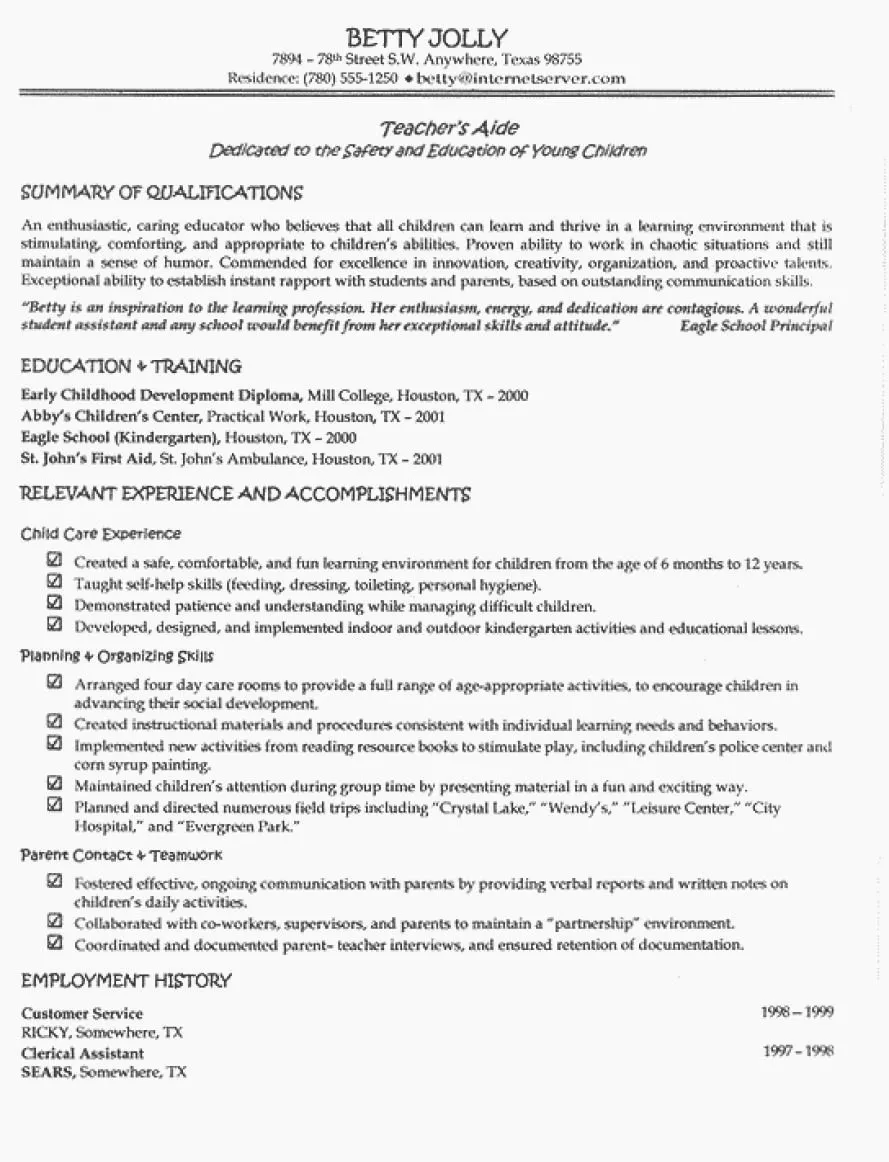
Expressing your passion for education is critical in a teacher cover letter. Share why you love teaching and what inspires you about the profession. Talk about your teaching philosophy and how you create a positive learning environment. Discuss the impact you aim to make on your students’ lives. Explain what excites you about the specific role or school you’re applying to. Your passion should be genuine and reflect your dedication to education. Include examples of your commitment to student success and personal growth. Your enthusiasm for teaching, combined with your experience, will make you stand out from other applicants. Make sure to demonstrate not only your commitment to teaching but also your enthusiasm for the specific school and its values. This dual approach will significantly strengthen your application.
Tailoring Your Letter to the School
Customize your cover letter for each school you apply to. Show that you have done your research and understand the school’s mission, values, and educational approach. Mention specific aspects of the school that appeal to you, such as its focus on a particular subject, its commitment to inclusive education, or its community involvement. If the school emphasizes a particular teaching philosophy, make sure your cover letter reflects your alignment with this philosophy. Show that your values match those of the school. Tailoring your letter demonstrates that you are genuinely interested in the opportunity and have the school’s specific needs in mind. Refer to the school’s website, mission statement, and any recent news or events to gather information. This personalized approach makes your application more impactful and increases your chances of making a positive impression. Make sure to highlight how your skills and experience align with the school’s specific requirements and objectives. Demonstrating this connection will make your application stand out.
Mentioning Specific Programs or Initiatives
If the school has specific programs or initiatives, such as STEM programs, arts integration, or special education services, explicitly mention your experience with them. Show how your skills and experience align with these programs. If you have experience with any specific technologies or teaching methods that the school uses, make sure to highlight those as well. If the job description mentions any particular initiatives or programs, make sure to directly address them in your cover letter. Doing so shows that you have carefully read the job posting and understand the school’s priorities. Highlighting your specific experience with these programs can demonstrate your ability to contribute immediately and add value to the school. Demonstrate your understanding of the programs and explain how you can contribute to their success, providing specific examples where possible to show your achievements.
Closing the Letter Effectively
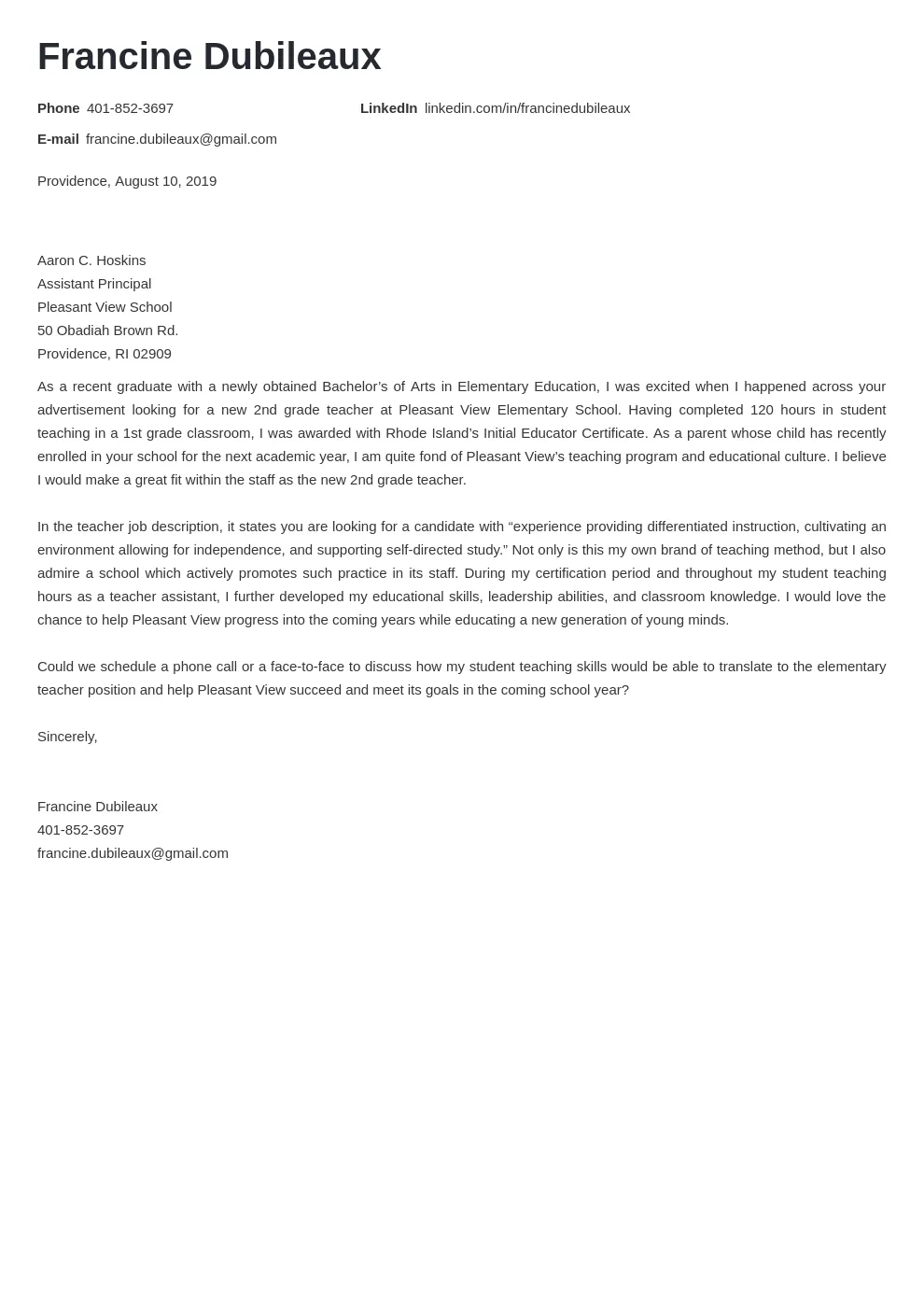
Conclude your cover letter with a strong closing paragraph. Reiterate your interest in the position and the school. Express your enthusiasm for the opportunity to contribute to the school community. Thank the hiring manager for their time and consideration. Clearly state your availability for an interview. Include your contact information one more time in your closing to ensure that the hiring manager can easily reach you. Close with a professional sign-off such as “Sincerely” or “Best regards,” followed by your typed name. A strong conclusion reinforces your key qualifications and leaves a lasting positive impression. Make your closing concise, confident, and memorable. A well-crafted closing paragraph will help to ensure that you stay in the hiring manager’s mind, improving your chances of getting an interview. This allows you to conclude with confidence and reinforce your suitability for the role.
Expressing Gratitude and Availability
Express your gratitude for the hiring manager’s time and consideration. Reiterate your enthusiasm for the opportunity and the school. State your availability for an interview. Provide your contact information in your closing paragraph to ensure easy access. Mention you look forward to hearing from them soon. A simple and professional closing shows your respect for the hiring process. Expressing gratitude highlights your professionalism and consideration for the hiring manager’s time. Confirming your availability for an interview makes the next steps easier for the hiring team. Your closing paragraph is another chance to leave a lasting positive impression.
Proofreading and Editing Your Cover Letter
Before submitting your cover letter, carefully proofread and edit it. Check for any grammatical errors, spelling mistakes, or typos. Ensure the letter is well-organized and easy to read. Have a trusted friend or colleague review your cover letter for feedback. Check for any inconsistencies in formatting or content. Make sure your tone is professional and enthusiastic. Proofreading is a crucial step in ensuring your cover letter is polished and professional. Errors can undermine your credibility and reduce your chances of getting an interview. A well-edited cover letter reflects your attention to detail and your commitment to excellence. Carefully proofreading your cover letter will increase your chances of making a positive impression.
